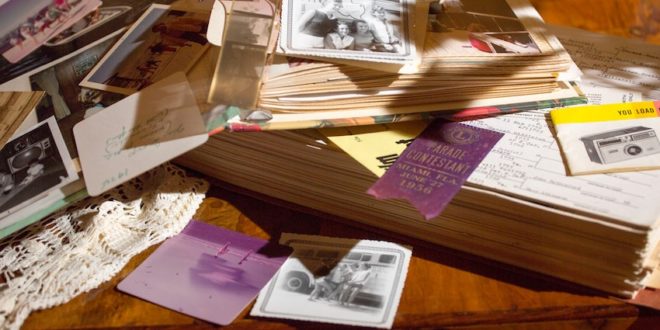Tracing your ancestry is not only fascinating, it’s also hard work, so once you’ve completed the task (not that tracing ancestry is ever quite completed!) why not enjoy sharing it with others. Here are 8 special ways to do just that:
1. Scrap book for grandchildren
Children are unlikely to wade through a dense family tree or book of family history, but they will be attracted to a scrapbook filled with small insights into their forebearers. Include photos of ancestors, but team them up with little snippet sized pieces of personal information about each person. For example, alongside Great-gran’s photo, include her Christmas cake recipe, a map showing where she lived, a photo of her house, a few lines from a letter she wrote, her wedding photo, and a list of thing she enjoyed doing. Allow a double spread for each relative, keep all the information bite-sized, and kids will love it!
2. Short story
You’re sure to have discovered a colourful character as you’ve researched your family history, and now, with your insider information, you’re in the perfect position to turn this into a short story. NZ Memories magazine may be an opportunity for publication, but why not check out short story competitions as well? Local libraries often run short story competitions, too.
3. Create a Calendar
A most memorable way to share family history is to create a calendar (online sites like this can help you). Feature one ancestor per month, alongside a few interesting details about their life. A more personalised Christmas gift would be hard to find!
4. PowerPoint
There are a whole range of ways to screen an ‘ancestry show’, and the software you require to create it will almost certainly already be on your computer. You spent months (perhaps years) researching your family history, so why not devote a few days to getting to grips with software (such as PowerPoint) that can help you share your passion with an audience.
5. Stitch it!
You’ve seen those gorgeous cross-stitched samplers in museums; now you can create something similar using your family tree as the focus. Record your ancestry in stitching, and you’ll be creating an heirloom to pass down through the generations. The internet is filled with pretty patterns to get you started. Alternatively, carve your ancestry into a wooden plaque.
6. Photo album
On the way to tracing ancestry, you’ll have encountered literally dozens of photos of family members, homes, farms, gardens, cars, pets and picnics. Don’t let them go to waste when other family members could also be enjoying them. A photo album is the place to gather them all together, along with brief captions. Photo albums are so inexpensive (as is copying the photos to go in them) that you can make up several at once, to give as gifts. Alternatively, design a photo album online, and have it professionally printed.
7. A speech
Who doesn’t love a well-prepared speech! And opportunities abound to deliver them – whether it’s at a family occasion such as a wedding or 21st, or in a more formal setting such as a toastmasters gathering or a marae function. When the opportunity arises, make family history your focus, and tailor it to the occasion. For example, if delivering a speech at a wedding, keep it brief and to the point by highlighting the long and successful marriage of an ancestor couple; if at a 21st, draw comparisons between the young person being celebrated, and a colourful (or earnest, hard-working, successful etc) relative from the past. Don’t miss an opportunity to introduce family to family!
8. The reunion
One of the most common forms of ancestry sharing is the family reunion. While this can seem a daunting undertaking to organise, it need not be. Reunions can be as small and intimate as you like. It might be as simple as inviting a handful of cousins, some of whom may never have met, to afternoon tea. And if you do want to extend the invitation, think about doing it in a private room at a public venue such as a cafe or restaurant, so you don’t have to manage the catering yourself.
However you decide to celebrate your ancestry, make it memorable!
To see our previous article on family history, click here









Join the Discussion
Type out your comment here:
You must be logged in to post a comment.